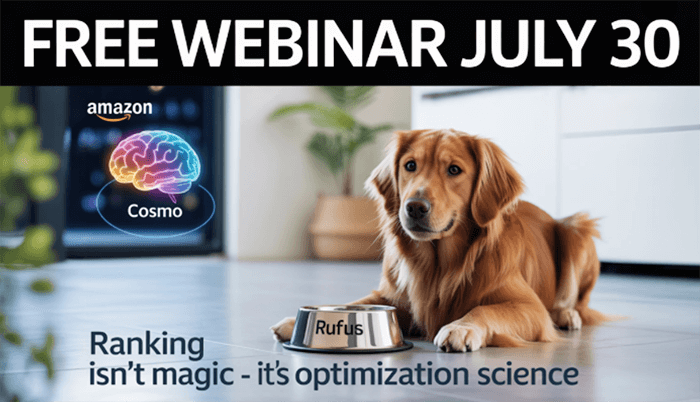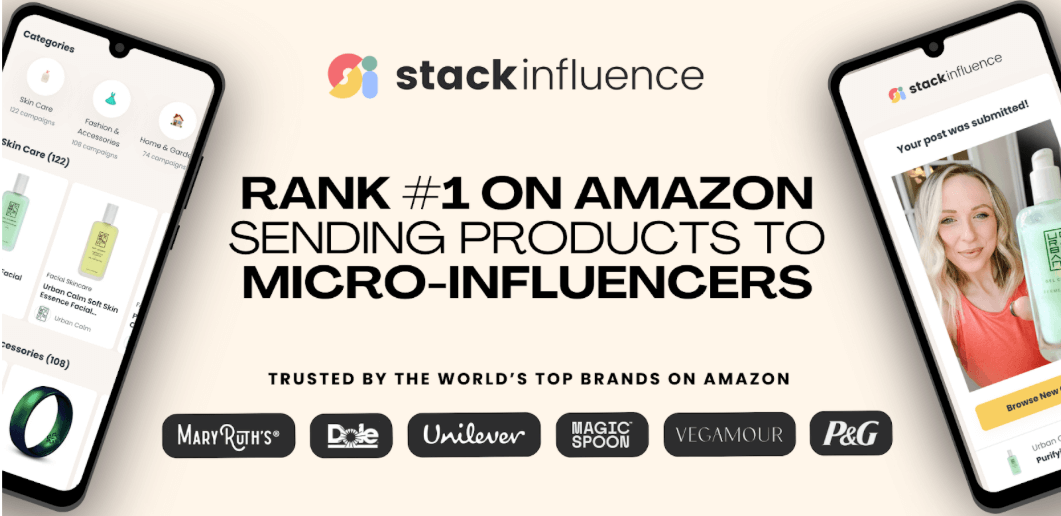- Billion Dollar Sellers
- Posts
- [ BDSN ] More sellers are generating millions on Amazon
[ BDSN ] More sellers are generating millions on Amazon

Happening Nov 6-10. Full details and schedule here
We have spots for a few more good folks if you are interested in joining us for this amazing weekend in November.
 | STUMP BEZOSAccording to pew Research, when users see an AI summary, only 8% click any link on the page. What percentage click a link that appears inside the summary? [ Answer at bottom of email ] |

🕹️ THE CONTENT ENGINE that CHANGED EVERYTHING
Sarah stared at her laptop screen, frustrated. Her handmade jewelry business had amazing products, but her social media efforts were scattered across six different platforms with mediocre results everywhere. Sound familiar?
That's when she discovered Kallaway's viral content strategy, a systematic approach that transformed her business from struggling startup to six-figure success story.
Here's exactly how she did it, and how you can too.
Sarah's breakthrough came when she realized she was making the classic mistake: trying to be everywhere at once. As Kallaway explains in his viral business content guide, the secret isn't being on every platform—it's building one powerful content engine on the right platform.
Step 1: Understanding Your 31 Options (And Immediately Cutting Them Down)
Sarah started by mapping out all possible combinations:
10 social platforms: Instagram, TikTok, YouTube, Facebook, Snapchat, LinkedIn, X, Threads, Substack, and Spotify
8 content types: Short text, long text, short-form video, medium-form video, long-form video, podcasts, static images, and ephemeral stories
That's 31 potential combinations. Overwhelming? Absolutely. But here's where Kallaway's filtering system (see video) saved Sarah hours of wasted effort.
The First Cut: Algorithm-Powered Discovery
Sarah immediately eliminated any platform/content combination that didn't have an algorithm pushing content to new viewers. Out went:
Static images (limited organic reach)
Ephemeral stories (followers-only content)
Audio-only podcasts (discovery challenges)
Substack (email-focused, not discovery-driven)
This left her with 22 viable options that were still manageable.
Step 2: Finding Each Platform's "Hero Content Type"
This is where Sarah's strategy got laser-focused. Every platform has one content type it pushes hardest:
Instagram & TikTok: Short-form video reels
YouTube: Medium-form videos (10-30 minutes)
Facebook: Short-form video (following Instagram's success)
LinkedIn: Short-form text OR newly launched short-form videos
X & Threads: Short-form text posts
For Sarah's jewelry business, this immediately clarified her options. No more guessing, as each platform had a clear winner.
Step 3: The Audience Filter (The Make-or-Break Decision)
Here's where Sarah almost made a costly mistake. She loved TikTok's energy, but her handmade jewelry customers weren't teenagers, they were professional women aged 28-45 with disposable income.
The Platform-Audience Breakdown for E-commerce:
High-ticket B2B services: LinkedIn dominates
Visual brands (fashion, beauty, home decor): Instagram is king
Mass appeal consumer goods: TikTok wins
Local brick-and-mortar: Facebook still rules
Gen Z entertainment: Snapchat territory
Sarah's jewelry fit perfectly into the visual brand category, making Instagram her obvious choice.
The 7-Step Content Engine Blueprint
Once Sarah picked her platform, the real work began:
Step 1: Study the Winners Sarah identified 10 successful jewelry creators on Instagram and reverse-engineered their formats. Behind-the-scenes creation videos, styling tips, and customer testimonials dominated.
Step 2: Create Format Templates She developed five go-to video formats based on what worked, giving her a content pipeline that never ran dry.
Step 3: The Quality-Quantity Accordion
First focus: Get video quality to 7/10 (good lighting, clear audio, engaging)
Then: Hit optimal quantity (5-7 videos per week for short-form)
Finally: Boost quality to 9/10 while maintaining volume
Step 4: Consistency for 6 Months Sarah committed to posting daily for six months. No excuses, no breaks. This consistency was crucial for algorithm recognition.
Step 5: Engage Religiously Every comment got a response. Every DM was answered. This increased her "surface area for fandom" and kept engagement rates high.
Step 6: Capture Leads Automatically Sarah used automation tools to funnel interested commenters into her email list through free styling guides and jewelry care tips.
Step 7: Convert Through Email Her real sales happened via email marketing. Instagram was the top of the funnel, email was where purchases occurred.
The Results: From Scattered to Systematic
Six months later, Sarah's transformation was remarkable:
Instagram following grew from 800 to 45,000
Email list exploded from 200 to 8,500 subscribers
Monthly revenue increased 400%
She was working fewer hours with better results
Your Action Plan: Start Today
Ready to build your own content engine? Here's your immediate next steps:
Audit your current efforts: Are you spread too thin across platforms?
Identify your customer avatar: Where do they actually spend time online?
Pick ONE platform/content type combination using Kallaway's framework
Study 5-10 successful creators in your space on that platform
Commit to 180 days of consistent posting at that platform's optimal frequency
Remember: A weak fisherman in a pond full of fish will always outperform an expert fisherman in an empty pond. The platform you choose matters more than your initial skill level.
Your content engine is waiting to be built. The question isn't whether it will work—it's whether you'll commit to building it.

🌎 INTERESTING STATS
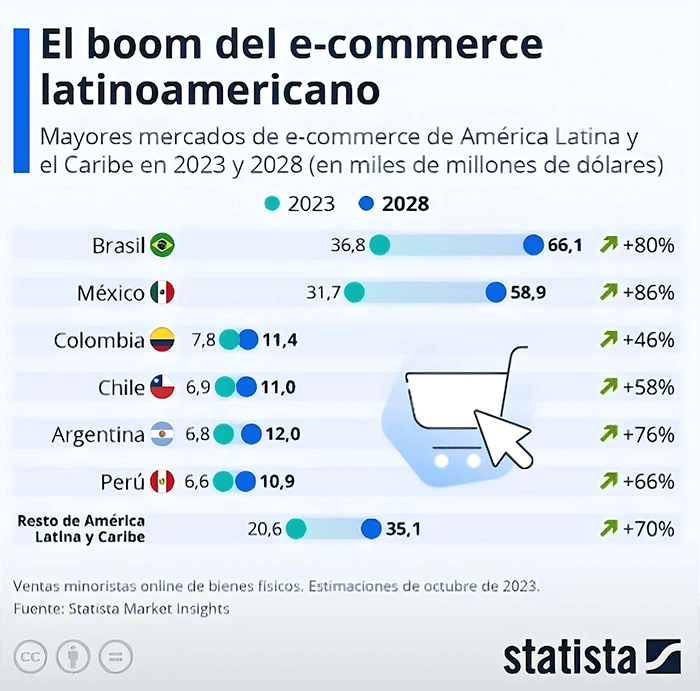

On July 30, join the Marketing Misfits Kevin & Norm along with AI ranking expert Oana Paduraiu, the force behind the most detailed breakdowns of Amazon’s Cosmo & Rufus engines, for a live webinar that unveils the new rules of visibility (replay available).
Discover how Amazon now ranks products using meaning, emotion, and semantic gaps (not keyword stuffing), and get instant access to powerful bots and checklists that give you an edge before your competitors even know what changed.
Live spots are limited so don’t miss it.

💰 MORE SELLERS are GENERATING MILLIONS on AMAZON
According to new data from Marketplace Pulse, the number of Amazon sellers generating over $1 million annually has surged from 60,000 in 2021 to more than 100,000 today, even as the total number of active sellers dropped by 10%.
The marketplace is consolidating: fewer sellers, but higher revenues for those who remain.
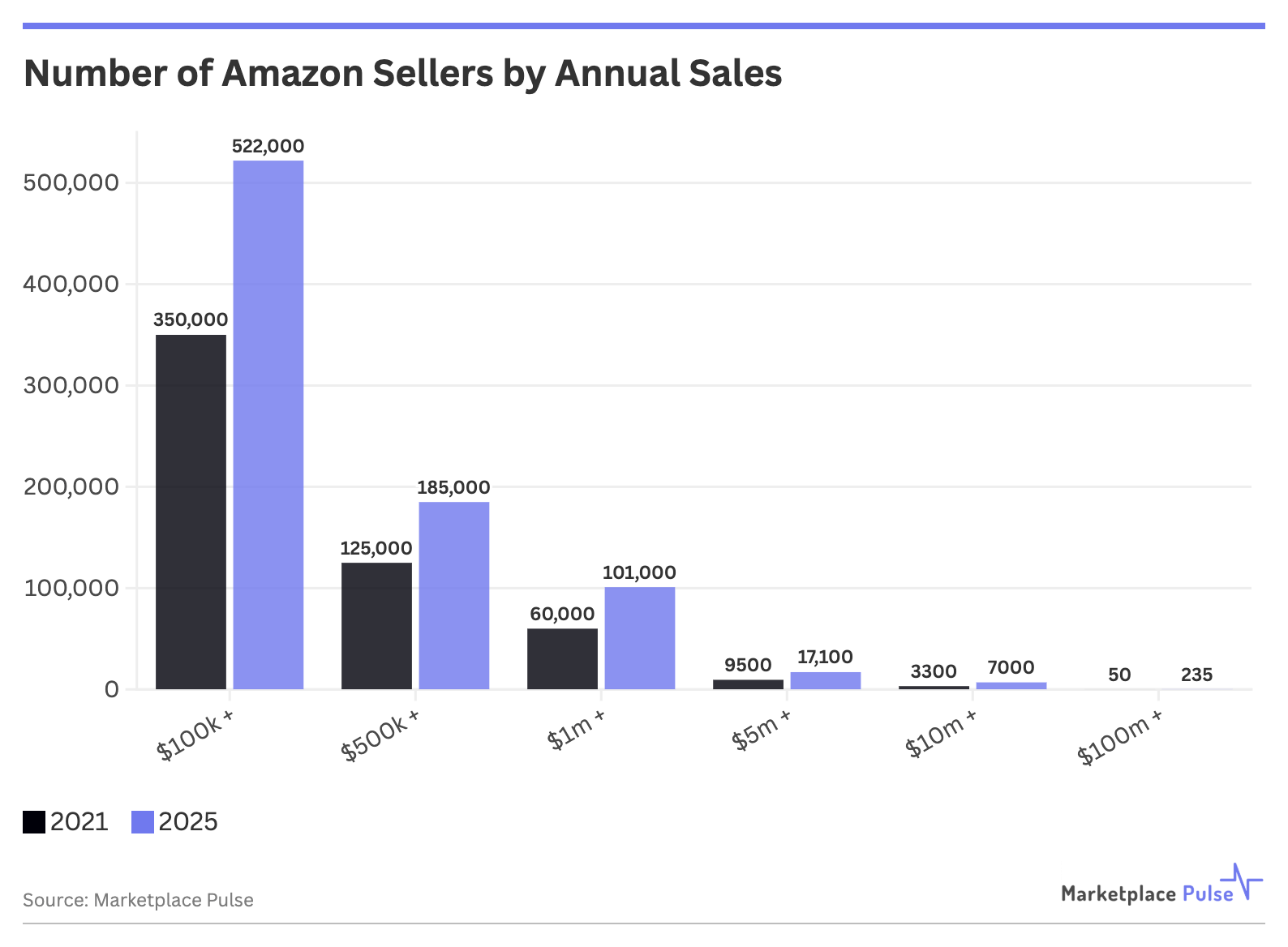
Top-line highlights:
230+ sellers now generate $100M+, up from 50 just four years ago.
Traffic per seller is up 31% since 2021 due to reduced competition.
In the U.S., just 2% of sellers make up over 50% of total marketplace revenue.
On Amazon in the USA, 57% of $1M+ sellers are Chinese, while 39% are American, but most of the $100M+ sellers are U.S.-based.
Amazon’s “winner-takes-most” reality is intensifying. While the barriers to entry are higher than ever, the rewards for mastering the game are growing even faster.

🔗 BDSN MYSTERY LINK of the DAY 🔗

🛍️ WHAT SELLERS NEED to KNOW ABOUT WALMART AI
Walmart just announced a major shift that could reshape retail as we know it. The retail giant is rolling out "Sparky," an AI shopping agent designed to replace traditional search bars entirely.
Instead of customers typing keywords, Sparky will handle complex shopping tasks from creating weekly grocery lists to furnishing entire apartments based on budget and style preferences.

The Big Picture: Walmart is deploying a comprehensive "agentic AI framework" across their entire ecosystem, affecting 230 million weekly customers and 2.1 million employees. This isn't just an upgrade, it's a complete rebuild of how commerce works.
Affect on Amazon Sellers: While Amazon appears to be building a "walled garden" of proprietary AI tools, Walmart is taking an open approach, designing Sparky to work with external AI assistants and third-party agents. This could position Walmart as the hub for AI-mediated shopping across the entire ecosystem.
What This Means for Your Business:
Visibility Crisis: As Kiri Masters points out in a Forbes article, "AI shoppers don't scroll—if you're not optimized for AI, you're invisible"
Data Quality Matters: Success may depend more on algorithmic optimization than traditional marketing tactics
Interface Evolution: Customers exposed to AI chat interfaces may start rejecting traditional search bars
The Competitive Pressure: When the world's largest retailer announces it's replacing search with AI agents, it sends a clear signal to the industry. Amazon will likely need to respond, potentially accelerating AI adoption across all major retail platforms.
The search box is disappearing faster than expected. Sellers who don't prepare for AI-optimized commerce risk becoming invisible in this new landscape.

Reach page 1 on Amazon simply by sending free products to Micro-Influencers
Use the platform Stack Influence to automate Micro-Influencer product seeding collaborations at scale (get thousands of collabs per month) and increase your Amazon ranking, generate UGC, and boost up your recurring revenue like never before.
Top Amazon brands like Magic Spoon, Unilever, and MaryRuth Organics have been able to get to #1 page positioning on Amazon and increase their monthly revenue as high as 13X in as little as 2 months.
Pay influencers only with products (stop negotiating fees)
Increase external traffic Amazon sales (get to top page rankings)
Get full rights image/video UGC (build your brand with authentic content)
100% automated management (don’t lift a finger to get influencer collabs at scale)
Don't believe it? Check out the results from the Blueland Micro Influencer campaign which generated a 13X ROI scaling up influencers on Amazon.
After successfully raising investment on Shark Tank, Blueland turned to Stack Influence to boost their Amazon sales and become a top selling listing using Micro Influencer marketing.
Increase your Amazon listings ranking for targeted keywords and multiply your organic recurring revenue in 2025!
Get 10% OFF by signing up this month

😱 PAYPAL CEO: AGENTIC COMMERCE REVOLUTION is HERE
PayPal CEO Alex Chriss says AI agents are reshaping the future of retail and commerce.
Chriss says the next major commerce evolution is here: Agentic AI. Unlike previous AI that operated in isolation, new protocols like Model Context Protocol (MCP) and Agent2Agent (A2A) now allow AI agents to communicate and coordinate autonomously, enabling seamless end-to-end shopping experiences.
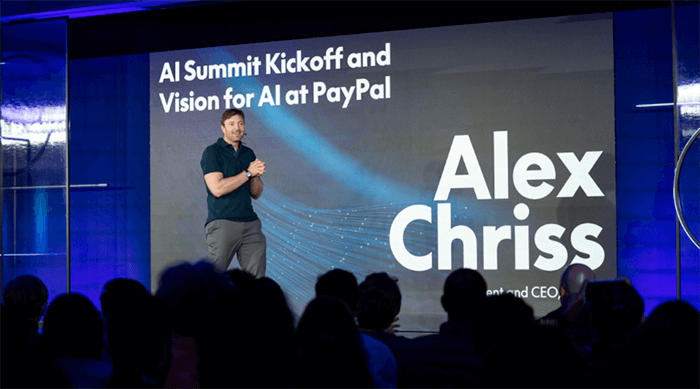
Three Key Shifts Underway
1. Proactive Shopping Assistants
AI agents are evolving from reactive order-takers to proactive purchasing assistants that can automate buying decisions intelligently and safely behind the scenes.
2. Commerce Beyond Storefronts
Merchants must now ensure their catalogs are discoverable across AI chat apps, voice assistants, and social platforms, not just traditional websites.
3. AI-Native Customer Journeys
Customers increasingly research, compare, and purchase entirely within AI services, making the AI layer a critical touchpoint for brand engagement.
The Stakes Are High
Chriss predicts 25% of e-commerce spending will be driven by AI agents by 2030. Sellers who integrate with AI agents now will lead the future, while those who wait risk being left behind in a world where AI decides market winners.
PayPal's Play
PayPal is positioning itself as the trusted infrastructure for agentic commerce, leveraging its 25-year track record and network of hundreds of millions of consumers and tens of millions of merchants.
The company has already released Agent Toolkits and MCP servers, with partnerships including Anthropic, Microsoft, Salesforce, and an integration with Perplexity Pro.

Discover the Chinese sellers‘ secret weapon: SellerSprite
🔎 Real-time data with our powerful Chrome extension
✅ Keepa × Deepseek -Break Down Your Competitor Strategies in Seconds
🤖 AI-powered reports for smarter product decisions
📈 Real-time keyword & niche insights
Just $20/month (was $79)
Or $199/year (was $390)

📛 GPT-5 is COMING and IT COULD CHANGE EVERYTHING
Last week was AI Week in DC, and Sam Altman dropped major updates on where ChatGPT is heading next, and ecommerce sellers need to pay attention.
🚀 ChatGPT is Now Processing 2.5 Billion Prompts/Day
Usage has more than doubled since December 2024, showing just how deeply integrated AI is becoming in daily workflows, including ecommerce.
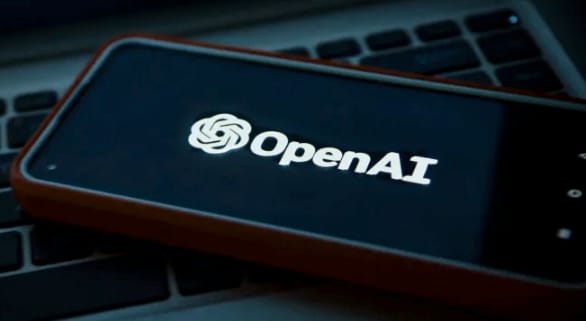
📅 ChatGPT-5 Launches in August
OpenAI is set to drop GPT-5 any week now, and it’s being called a “quantum leap” over GPT-4. Here’s what’s coming:
All-in-One AI Agent: No more switching tools. GPT-5 will automatically pick the right model or tool (coding, research, image generation, etc.) for the task.
Massive Context Window: Competing with Google’s Gemini 1M tokens, GPT-5 will handle longer prompts, deeper memory, and more complex workflows (great for product copy, multi-ASIN optimization, or long-tail customer segmentation).
Next-Level Coding & Reasoning: Built-in upgrades could rival tools like Claude for technical tasks, and early testers say it answers tough questions with ease.
Multimodal Mastery: GPT-5 is expected to combine image, text, and action capabilities in a seamless interface:
Think AI that can write your listings, generate visuals, analyze trends, and update your Shopify or Amazon backend.
🎯 Why It Matters for Sellers
This isn’t just a new version. it’s a shift in how AI will be used to act, not just respond.
From automating your ecommerce workflows to creating smarter product pages and even helping you optimize for SEO and AECO (Answer Engine Content Optimization), GPT-5 could become your most powerful virtual employee.
🧩 Get ready: AI is evolving from assistant to operator.

🔥 MORE HOT PICKS 🔥
🥃 PARTING SHOT
“The future is already here — it's just not evenly distributed.”
✌🏼 See you again Thursday …
The answer to today’s STUMP BEZOS is
Only 1% click a link inside an AI search summary


